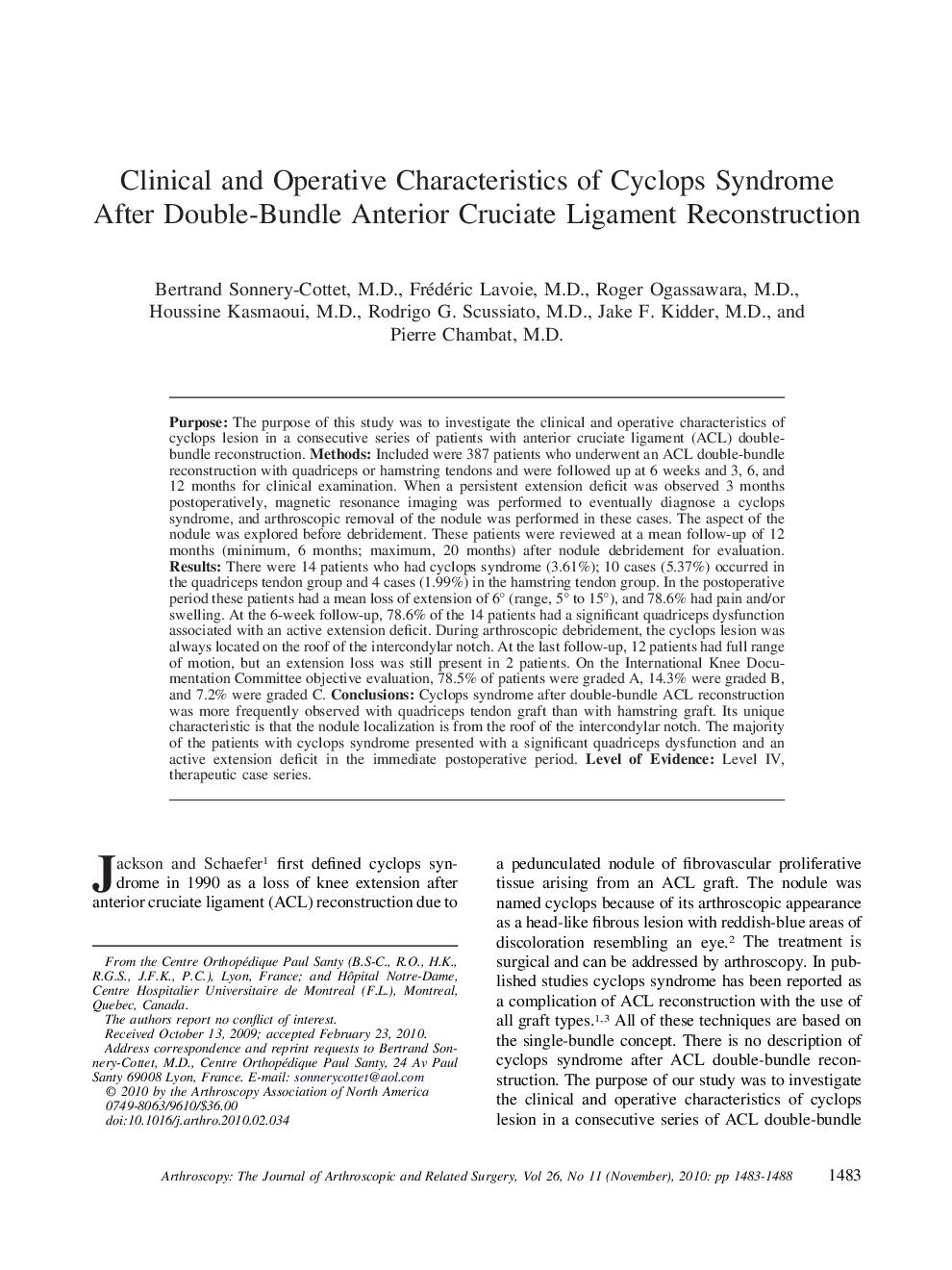| Article ID | Journal | Published Year | Pages | File Type |
|---|---|---|---|---|
| 4045055 | Arthroscopy: The Journal of Arthroscopic & Related Surgery | 2010 | 6 Pages |
PurposeThe purpose of this study was to investigate the clinical and operative characteristics of cyclops lesion in a consecutive series of patients with anterior cruciate ligament (ACL) double-bundle reconstruction.MethodsIncluded were 387 patients who underwent an ACL double-bundle reconstruction with quadriceps or hamstring tendons and were followed up at 6 weeks and 3, 6, and 12 months for clinical examination. When a persistent extension deficit was observed 3 months postoperatively, magnetic resonance imaging was performed to eventually diagnose a cyclops syndrome, and arthroscopic removal of the nodule was performed in these cases. The aspect of the nodule was explored before debridement. These patients were reviewed at a mean follow-up of 12 months (minimum, 6 months; maximum, 20 months) after nodule debridement for evaluation.ResultsThere were 14 patients who had cyclops syndrome (3.61%); 10 cases (5.37%) occurred in the quadriceps tendon group and 4 cases (1.99%) in the hamstring tendon group. In the postoperative period these patients had a mean loss of extension of 6° (range, 5° to 15°), and 78.6% had pain and/or swelling. At the 6-week follow-up, 78.6% of the 14 patients had a significant quadriceps dysfunction associated with an active extension deficit. During arthroscopic debridement, the cyclops lesion was always located on the roof of the intercondylar notch. At the last follow-up, 12 patients had full range of motion, but an extension loss was still present in 2 patients. On the International Knee Documentation Committee objective evaluation, 78.5% of patients were graded A, 14.3% were graded B, and 7.2% were graded C.ConclusionsCyclops syndrome after double-bundle ACL reconstruction was more frequently observed with quadriceps tendon graft than with hamstring graft. Its unique characteristic is that the nodule localization is from the roof of the intercondylar notch. The majority of the patients with cyclops syndrome presented with a significant quadriceps dysfunction and an active extension deficit in the immediate postoperative period.Level of EvidenceLevel IV, therapeutic case series.
